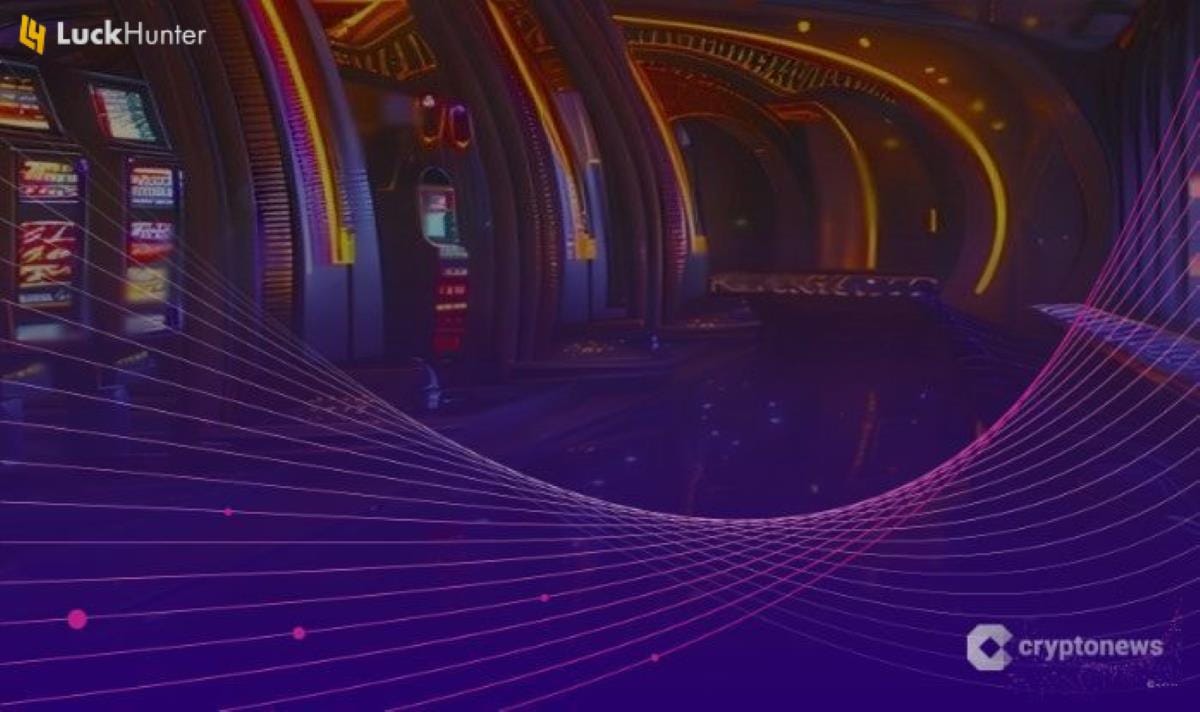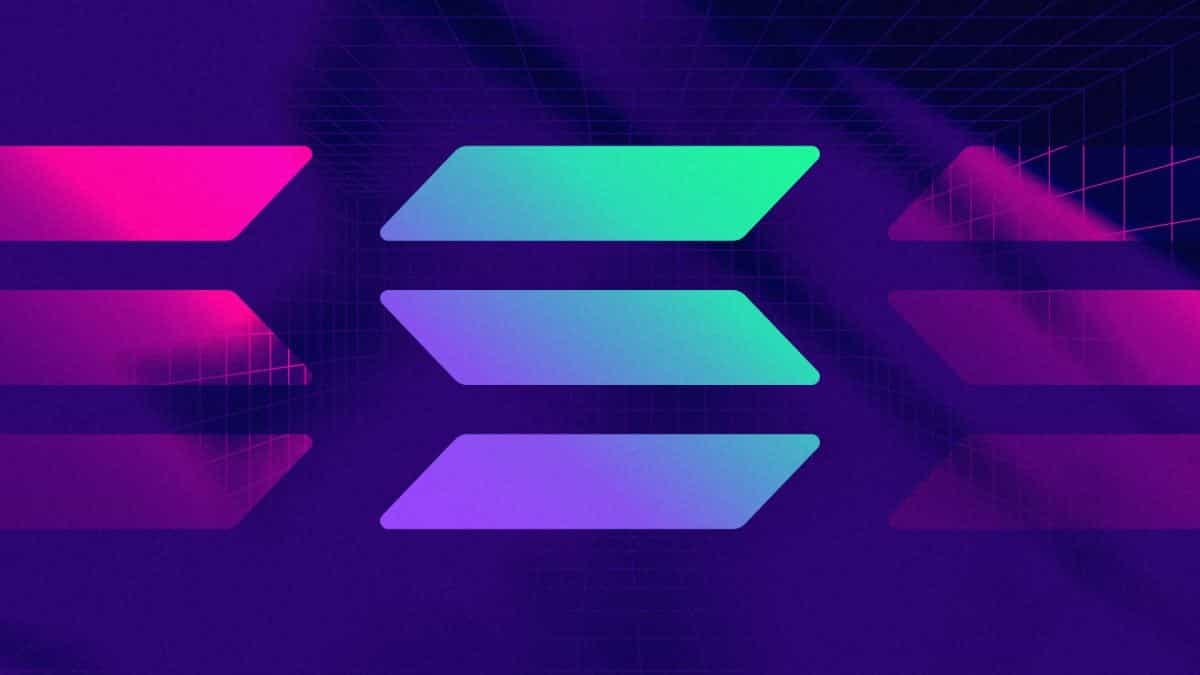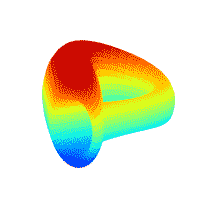
AshuBajwaB60
2025/04/03 08:44
# __Navigating the Future of E-commerce: Trends, Strategies, and Innovations__
The e-commerce landscape is rapidly evolving, driven by advances in technology, shifting consumer behaviors, and innovative business models. As we look to the future, it's essential to understand the trends, strategies, and innovations that will shape the industry. In this article, we'll explore the future of e-commerce, highlighting key developments and providing insights for businesses seeking to thrive in this dynamic environment.
# Trends Shaping the Future of E-commerce
Several trends are transforming the e-commerce landscape:
1. *Personalization and AI-Powered Recommendations*: AI-driven personalization and recommendation engines are enhancing customer experiences, increasing engagement, and driving conversions.
2. *Omnichannel Retailing*: Seamless integration across online and offline channels is becoming essential, enabling customers to interact with brands whenever, wherever, and however they choose.
3. *Sustainable and Socially Responsible E-commerce*: Consumers are increasingly expecting brands to prioritize sustainability, social responsibility, and environmental stewardship.
4. *Augmented Reality (AR) and Virtual Reality (VR) Experiences*: Immersive AR and VR experiences are revolutionizing product demonstrations, try-ons, and customer engagement.
# Strategies for E-commerce Success
To succeed in the rapidly evolving e-commerce landscape, businesses should:
1. *Prioritize Customer Experience*: Focus on delivering seamless, personalized, and engaging customer experiences across all touchpoints.
2. *Invest in Data Analytics and AI*: Leverage data analytics and AI to gain insights into customer behavior, preferences, and needs, informing product development, marketing strategies, and operational optimization.
3. *Develop a Strong Brand Identity*: Establish a unique brand voice, visual identity, and tone, ensuring consistency across all channels and customer interactions.
4. *Foster a Culture of Innovation*: Encourage experimentation, learning, and innovation within your organization, staying ahead of the curve in terms of technology, trends, and consumer expectations.
# Innovations Transforming E-commerce
Several innovations are transforming the e-commerce landscape:
1. *Blockchain and Cryptocurrency Payments*: Blockchain technology and cryptocurrency payments are enhancing security, transparency, and efficiency in e-commerce transactions.
2. *Voice Commerce and Conversational AI*: Voice-activated assistants and conversational AI are revolutionizing the way customers interact with brands, making shopping more convenient, accessible, and personalized.
3. *3D Printing and Customization*: 3D printing and customization technologies are enabling businesses to offer personalized, made-to-order products, reducing waste and inventory costs.
4. *Social Commerce and Influencer Marketing*: Social commerce platforms and influencer marketing are becoming increasingly important, enabling businesses to reach and engage with customers in new and innovative ways.
# Conclusion
The future of e-commerce is exciting, with trends, strategies, and innovations converging to create new opportunities for businesses to thrive. By prioritizing customer experience, investing in data analytics and AI, developing a strong brand identity, and fostering a culture of innovation, businesses can stay ahead of the curve and succeed in the rapidly evolving e-commerce landscape.
# Recommendations
1. *Stay Up-to-Date with Industry Trends*: Continuously monitor and analyze industry trends, innovations, and consumer behaviors to inform business strategies.
2. *Invest in Emerging Technologies*: Explore and invest in emerging technologies, such as AR, VR, blockchain, and voice commerce, to stay ahead of the competition.
3. *Prioritize Customer Experience*: Focus on delivering seamless, personalized, and engaging customer experiences across all touchpoints, driving loyalty, retention, and advocacy.
4. *Develop a Strong Brand Identity*: Establish a unique brand voice, visual identity, and tone, ensuring consistency across all channels and customer interactions.
5. *Foster a Culture of Innovation*: Encourage experimentation, learning, and innovation within your organization, driving growth, competitiveness, and success in the e-commerce landscape.

AshuBajwaB60
2025/04/01 11:00
# __The Impact of Virtual Reality on Architecture and Real Estate__
Virtual reality (VR) is transforming the architecture and real estate industries, providing a new and innovative way to design, build, and sell properties. By utilizing VR technology, architects, designers, and real estate agents can create immersive and interactive experiences, enabling clients to fully visualize and explore spaces before they are built. In this article, we'll explore the impact of VR on architecture and real estate, highlighting the benefits, challenges, and future directions of this emerging technology.
# Benefits of Virtual Reality in Architecture and Real Estate
The benefits of VR in architecture and real estate are numerous, including:
1. *Improved Visualization*: VR enables clients to fully visualize and explore spaces, reducing the risk of miscommunication and improving design accuracy.
2. *Enhanced Collaboration*: VR facilitates collaboration between architects, designers, and clients, enabling real-time feedback and design iteration.
3. *Increased Efficiency*: VR streamlines the design and construction process, reducing the need for physical prototypes and minimizing errors.
4. *Cost Savings*: VR can reduce costs associated with physical prototypes, travel, and site visits.
# Challenges Facing Virtual Reality Adoption in Architecture and Real Estate
Despite the benefits of VR in architecture and real estate, there are several challenges facing adoption, including:
1. *High Upfront Costs*: The cost of VR equipment and software can be prohibitively expensive for small firms and individuals.
2. *Limited Content Creation*: Creating high-quality VR content requires specialized skills and expertise, limiting the availability of VR experiences.
3. *User Experience*: VR experiences can be disorienting and uncomfortable for some users, particularly those with motion sickness or other sensitivities.
4. *Integration with Existing Workflows*: VR technology must be integrated with existing workflows and software, requiring significant investment in training and implementation.
# Future Directions for Virtual Reality in Architecture and Real Estate
The future of VR in architecture and real estate holds much promise, with potential developments in:
1. *Cloud-Based VR Platforms*: Cloud-based VR platforms can enable seamless collaboration and content sharing, reducing the need for expensive hardware and software.
2. *Artificial Intelligence and Machine Learning*: AI and ML can enhance VR experiences, enabling real-time design iteration and optimization.
3. *Mixed Reality and Augmented Reality*: Mixed reality (MR) and augmented reality (AR) can further blur the lines between physical and digital environments, enabling new and innovative applications in architecture and real estate.
4. *Virtual Property Tours*: Virtual property tours can become increasingly common, enabling clients to explore properties remotely and reducing the need for physical site visits.
# Conclusion
Virtual reality is transforming the architecture and real estate industries, providing a new and innovative way to design, build, and sell properties. While challenges remain, the benefits of VR are clear, and the industry is expected to continue to grow and evolve in the coming years.
# Recommendations
1. *Invest in VR Equipment and Software*: Invest in VR equipment and software to enable the creation of high-quality VR experiences.
2. *Develop VR Content Creation Skills*: Develop VR content creation skills to enable the creation of high-quality VR experiences.
3. *Integrate VR with Existing Workflows*: Integrate VR technology with existing workflows and software to enable seamless collaboration and content sharing.
4. *Promote VR Adoption*: Promote VR adoption among architects, designers, and real estate agents to enable the widespread adoption of this emerging technology.
5. *Support Research and Development*: Support research and development in VR technology, focusing on cloud-based platforms, AI, and MR/AR applications.

Navigating the Shifting Sands: Understanding $IMT Market Demand
The $IMT (International Mobile Telecommunications) market is a dynamic and ever-evolving landscape, driven by relentless technological advancements and the insatiable global appetite for connectivity. Understanding the intricate forces shaping $IMT demand is crucial for stakeholders across the telecommunications ecosystem, from network operators and equipment manufacturers to application developers and consumers.
The Driving Forces:
Several key factors are fueling the continued growth and transformation of $IMT market demand:
* Explosive Data Consumption: The proliferation of bandwidth-intensive applications like video streaming, online gaming, and augmented/virtual reality (AR/VR) is driving an exponential increase in data consumption. This necessitates robust $IMT networks capable of handling the surging traffic.
* The 5G Revolution and Beyond: The rollout of 5G networks, with its promise of ultra-low latency, high bandwidth, and massive connectivity, is fundamentally reshaping the $IMT landscape. As 5G matures and 6G research accelerates, the demand for advanced $IMT technologies will only intensify.
* Internet of Things (IoT) Expansion: The rapid expansion of IoT devices and applications, spanning smart homes, industrial automation, and connected vehicles, is creating a massive demand for reliable and ubiquitous $IMT connectivity.
* Emerging Markets Growth: Developing economies are experiencing rapid growth in mobile penetration and data usage, creating significant opportunities for $IMT market expansion. These markets often represent the most significant areas of future growth in $IMT.
* Digital Transformation: Businesses across all sectors are undergoing digital transformations, relying on $IMT networks to support remote work, cloud computing, and other digital services. This trend is further amplified by global events that accelerate the adoption of digital tools.
* Mobile Video Consumption: The increase in mobile video consumption, especially short form content, is a significant driver of data demand. This trend causes $IMT networks to be under more strain than ever before.
Challenges and Considerations:
While the $IMT market holds immense potential, it also faces several challenges:
* Spectrum Availability: Securing sufficient spectrum is critical for deploying and expanding $IMT networks. The increasing demand for spectrum is driving up auction prices and creating competition among operators.
* Infrastructure Investment: Building and maintaining robust $IMT infrastructure, particularly 5G and beyond, requires significant capital investment.
* Affordability and Accessibility: Ensuring affordable access to $IMT services for all segments of the population is essential for bridging the digital divide.
* Security and Privacy: As $IMT networks become more pervasive, ensuring the security and privacy of user data is paramount.
* Sustainability: The environmental impact of $IMT networks, including energy consumption and electronic waste, is a growing concern.
The Future of $IMT:
The future of the $IMT market is bright, driven by relentless innovation and the increasing reliance on mobile connectivity. As technologies like 5G, 6G, and artificial intelligence converge, $IMT networks will play an even more critical role in shaping the digital economy. Stakeholders must remain agile and adaptable to navigate the shifting sands of $IMT market demand and capitalize on the opportunities that lie ahead. The $IMT market will continue to grow and transform the way people live and work.

AshuBajwaB60
2025/03/31 08:30
# __The Impact of Virtual Reality on Education: Enhancing the Learning Experience__
Virtual reality (VR) is transforming the education sector, offering an immersive and interactive learning experience that enhances student engagement, retention, and understanding. In this article, we'll explore the impact of VR on education, highlighting its benefits, applications, challenges, and future directions.
# Benefits of Virtual Reality in Education
VR offers numerous benefits in education, including:
1. *Enhanced Engagement*: VR experiences are interactive and immersive, increasing student engagement and motivation.
2. *Improved Retention*: VR helps students retain information better, as they are more likely to remember experiences than traditional teaching methods.
3. *Increased Understanding*: VR enables students to visualize complex concepts, improving their understanding and comprehension.
4. *Personalized Learning*: VR can be tailored to individual learning styles, abilities, and needs, providing a personalized learning experience.
# Applications of Virtual Reality in Education
VR has various applications in education, including:
1. *Science, Technology, Engineering, and Mathematics (STEM)*: VR can enhance STEM education by providing interactive, 3D models and simulations.
2. *Language Learning*: VR can immerse language learners in virtual environments, enhancing their listening, speaking, reading, and writing skills.
3. *History and Cultural Studies*: VR can transport students to historical events, cultural sites, and museums, providing a unique perspective on the past.
4. *Medical and Healthcare Education*: VR can simulate real-world medical scenarios, allowing students to practice and develop their clinical skills.
# Challenges Facing Virtual Reality in Education
While VR offers numerous benefits in education, there are also challenges to overcome, including:
1. *Cost and Accessibility*: VR equipment and software can be expensive, limiting accessibility for some schools and students.
2. *Technical Issues*: VR experiences can be affected by technical issues, such as lag, glitches, and hardware malfunctions.
3. *Content Creation*: Creating high-quality, educational VR content can be time-consuming and require significant resources.
4. *Teacher Training*: Teachers may require training to effectively integrate VR into their teaching practices.
# Future Directions for Virtual Reality in Education
The future of VR in education holds much promise, with potential developments in:
1. *Advancements in Hardware and Software*: Improvements in VR hardware and software will enhance the overall VR experience, making it more accessible and affordable.
2. *Increased Content Availability*: The development of more educational VR content will provide teachers with a wider range of resources to support their teaching practices.
3. *Integration with Other Technologies*: VR will be integrated with other technologies, such as artificial intelligence, augmented reality, and the Internet of Things, to create more immersive and interactive learning experiences.
4. *Personalized and Adaptive Learning*: VR will be used to create personalized and adaptive learning experiences, tailored to individual students' needs, abilities, and learning styles.
# Conclusion
Virtual reality is transforming the education sector, offering an immersive and interactive learning experience that enhances student engagement, retention, and understanding. While there are challenges to overcome, the benefits of VR in education make it an exciting and promising field of study.
# Recommendations
1. *Invest in Virtual Reality Infrastructure*: Invest in VR equipment and software to support the integration of VR into educational institutions.
2. *Develop High-Quality Educational Content*: Develop high-quality, educational VR content that aligns with curriculum standards and supports teaching practices.
3. *Provide Teacher Training and Support*: Provide teachers with training and support to effectively integrate VR into their teaching practices.
4. *Conduct Research and Evaluation*: Conduct research and evaluation to assess the effectiveness of VR in education and identify areas for improvement.
5. *Foster Collaboration and Knowledge Sharing*: Foster collaboration and knowledge sharing among educators, researchers, and industry experts to advance the use of VR in education.

AshuBajwaB60
2025/03/27 17:30
# __Revolutionizing Education: The Future of Virtual and Augmented Reality in the Classroom__
The education sector is on the cusp of a revolution, driven by the increasing adoption of virtual and augmented reality (VR/AR) technologies. VR/AR is transforming the way we learn, making education more immersive, interactive, and effective. In this article, we'll explore the future of VR/AR in education, highlighting its benefits, challenges, and potential applications.
# Benefits of Virtual and Augmented Reality in Education
VR/AR offers several benefits, including:
1. *Improved Engagement*: VR/AR increases student engagement, motivation, and participation, leading to better learning outcomes.
2. *Enhanced Retention*: VR/AR improves knowledge retention, as students are more likely to remember experiences that are interactive and immersive.
3. *Personalized Learning*: VR/AR enables personalized learning, tailoring educational content to individual students' needs, abilities, and learning styles.
4. *Increased Accessibility*: VR/AR increases accessibility, enabling students with disabilities or limitations to participate in educational experiences that may be difficult or impossible for them to access otherwise.
5. *Cost-Effective*: VR/AR is cost-effective, reducing the need for physical equipment, travel, and other resources.
# Challenges of Virtual and Augmented Reality in Education
VR/AR also faces several challenges, including:
1. *Technical Issues*: VR/AR requires reliable technology, including high-performance computers, specialized hardware, and stable internet connections.
2. *Content Creation*: VR/AR requires high-quality, educational content, which can be time-consuming and expensive to create.
3. *Teacher Training*: VR/AR requires teacher training, enabling educators to effectively integrate VR/AR into their curriculum and teaching practices.
4. *Equity and Access*: VR/AR raises concerns about equity and access, as not all students have equal access to VR/AR technology and resources.
5. *Assessment and Evaluation*: VR/AR requires new approaches to assessment and evaluation, measuring student learning in immersive environments.
# Applications of Virtual and Augmented Reality in Education
VR/AR is being applied in various ways, including:
1. *K-12 Education*: VR/AR is being used in K-12 education, enhancing student engagement, motivation, and participation in subjects such as math, science, and language arts.
2. *Higher Education*: VR/AR is being used in higher education, enabling students to explore complex concepts, simulate real-world scenarios, and develop practical skills.
3. *Vocational Training*: VR/AR is being used in vocational training, providing students with hands-on experience and training in fields such as healthcare, manufacturing, and construction.
4. *Special Education*: VR/AR is being used in special education, providing students with disabilities or limitations with personalized learning experiences and accommodations.
5. *Corporate Training*: VR/AR is being used in corporate training, enabling employees to develop new skills, practice complex scenarios, and improve their performance.
# Conclusion
The future of education is virtual and augmented reality, offering a more immersive, interactive, and effective way of learning. While VR/AR faces several challenges, including technical issues, content creation, and teacher training, the benefits of VR/AR, including improved engagement, enhanced retention, and personalized learning, make it an attractive option for many educational institutions and organizations.
# Recommendations
1. *Invest in Virtual and Augmented Reality Infrastructure*: Invest in VR/AR infrastructure, including high-performance computers, specialized hardware, and stable internet connections.
2. *Develop High-Quality Educational Content*: Develop high-quality, educational VR/AR content, tailored to specific subjects, age groups, and learning objectives.
3. *Provide Teacher Training and Support*: Provide teacher training and support, enabling educators to effectively integrate VR/AR into their curriculum and teaching practices.
4. *Address Equity and Access Concerns*: Address equity and access concerns, ensuring that all students have equal access to VR/AR technology and resources.
5. *Develop New Approaches to Assessment and Evaluation*: Develop new approaches to assessment and evaluation, measuring student learning in immersive environments.


 Precio más bajo
Precio más bajo Precio más alto
Precio más alto 












































.png)



Datos sociales de Victoria VR
En las últimas 24 horas, la puntuación del sentimiento en redes sociales de Victoria VR fue 3, y el sentimiento en redes sociales en cuanto a la tendencia del precio de Victoria VR fue Alcista. La puntuación global de Victoria VR en redes sociales fue de 0, que se sitúa en el puesto 602 entre todas las criptomonedas.
Según LunarCrush, en las últimas 24 horas, se mencionó a las criptomonedas en redes sociales un total de 1,058,120 veces, y se mencionó al token Victoria VR con un ratio de frecuencia de 0%, lo que lo sitúa en el puesto entre todas las criptomonedas.
En las últimas 24 horas, hubo un total de 42 usuarios únicos debatiendo sobre Victoria VR y un total de 22 menciones sobre Victoria VR. Sin embargo, en comparación con el periodo de 24 horas anterior, el número de usuarios únicos Disminución del un 19%, y el número total de menciones Aumento del un 29%.
En Twitter, hubo un total de 0 tweets mencionando a Victoria VR en las últimas 24 horas. Entre ellos, el 0% son optimistas respecto a Victoria VR, el 0% son pesimistas respecto a Victoria VR y el 100% son neutrales respecto a Victoria VR.
En Reddit, hubo 1 publicaciones mencionando a Victoria VR en las últimas 24 horas. En comparación con el periodo de 24 horas anterior, el número de menciones Disminución del un 0%.
Panorama social completo
3